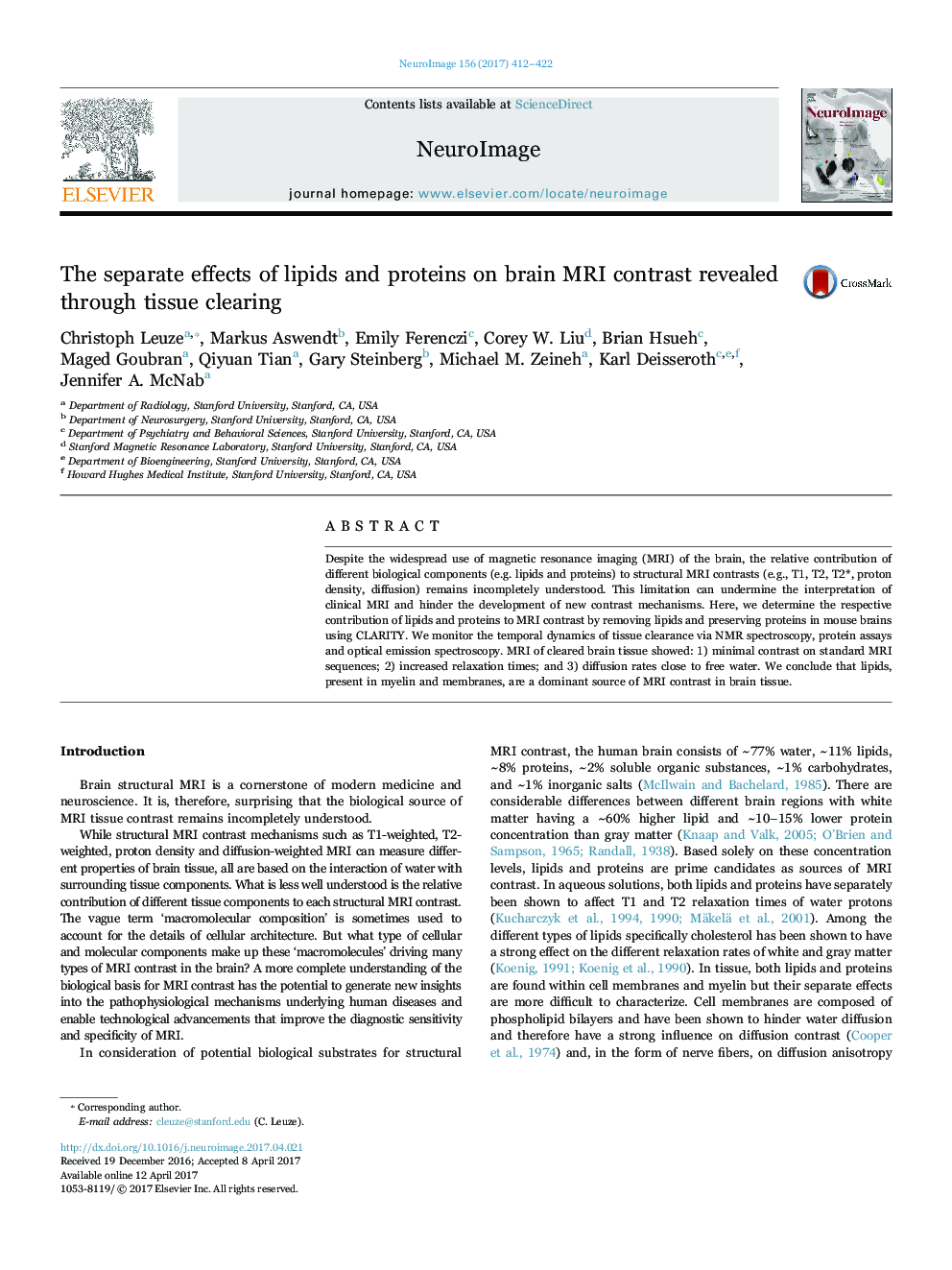| Article ID | Journal | Published Year | Pages | File Type |
|---|---|---|---|---|
| 5631039 | NeuroImage | 2017 | 11 Pages |
â¢Characterized lipid removal and protein retention of CLARITY tissue clearing method.â¢Evidence that lipids are more significant contributor to MRI contrast than proteins.â¢MRI of cleared tissue had increased relaxation times and increased diffusion rates.
Despite the widespread use of magnetic resonance imaging (MRI) of the brain, the relative contribution of different biological components (e.g. lipids and proteins) to structural MRI contrasts (e.g., T1, T2, T2*, proton density, diffusion) remains incompletely understood. This limitation can undermine the interpretation of clinical MRI and hinder the development of new contrast mechanisms. Here, we determine the respective contribution of lipids and proteins to MRI contrast by removing lipids and preserving proteins in mouse brains using CLARITY. We monitor the temporal dynamics of tissue clearance via NMR spectroscopy, protein assays and optical emission spectroscopy. MRI of cleared brain tissue showed: 1) minimal contrast on standard MRI sequences; 2) increased relaxation times; and 3) diffusion rates close to free water. We conclude that lipids, present in myelin and membranes, are a dominant source of MRI contrast in brain tissue.
